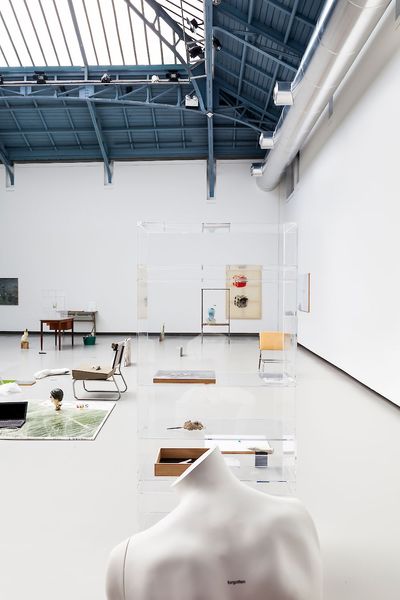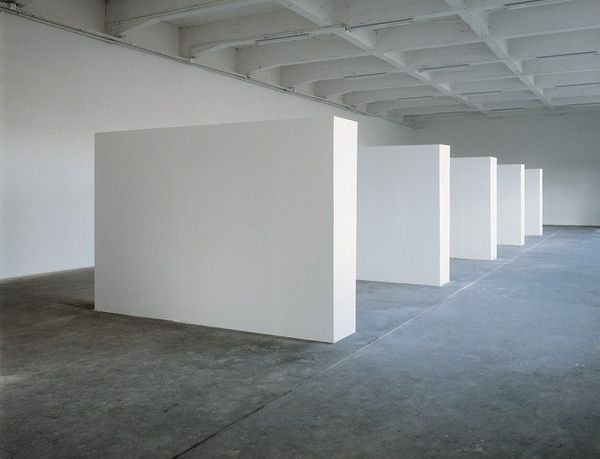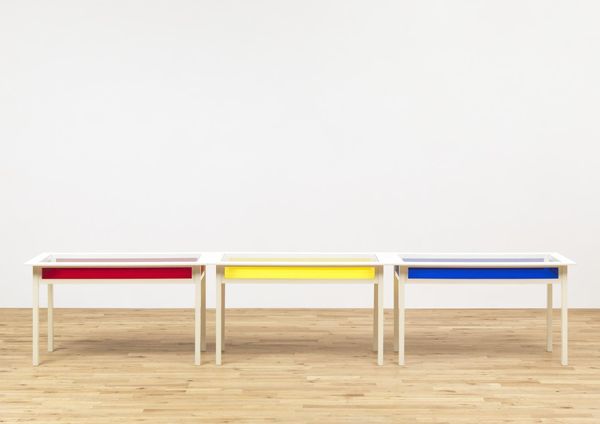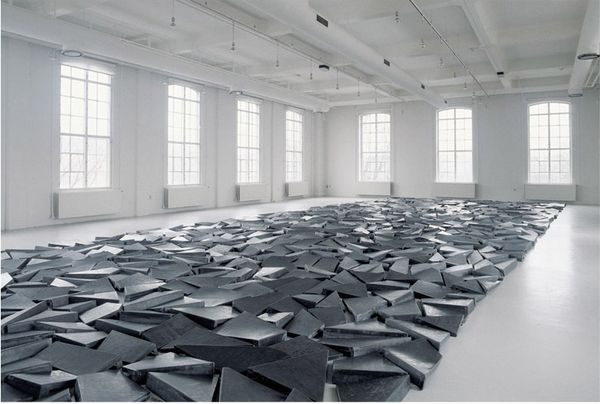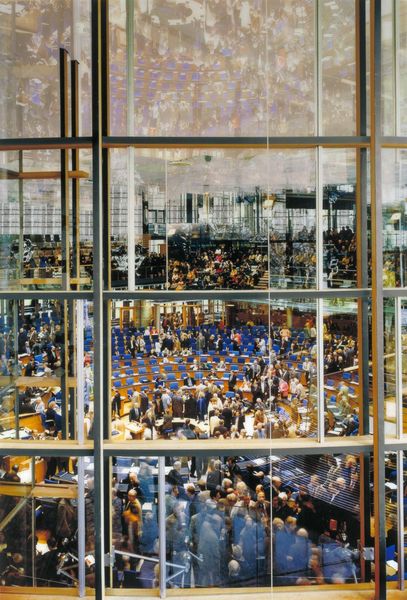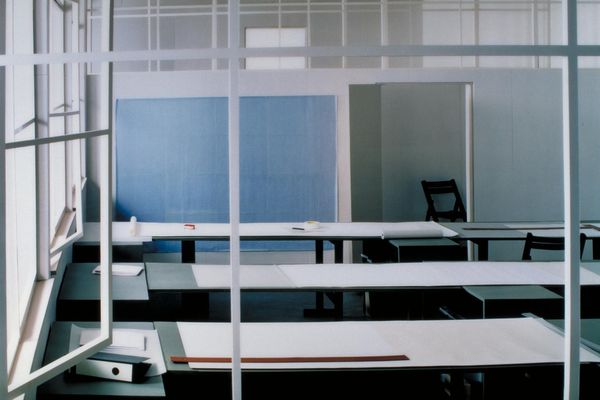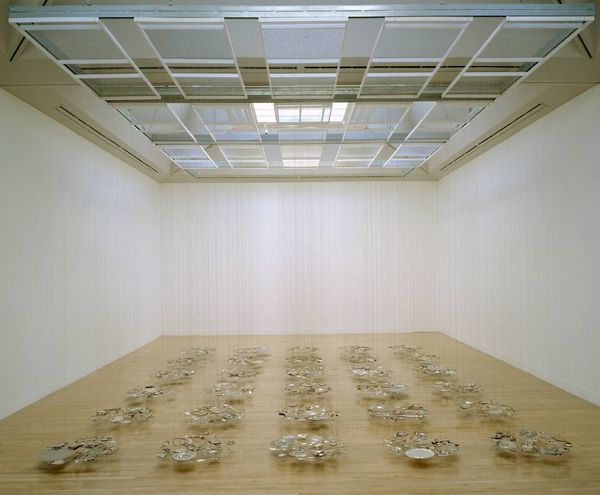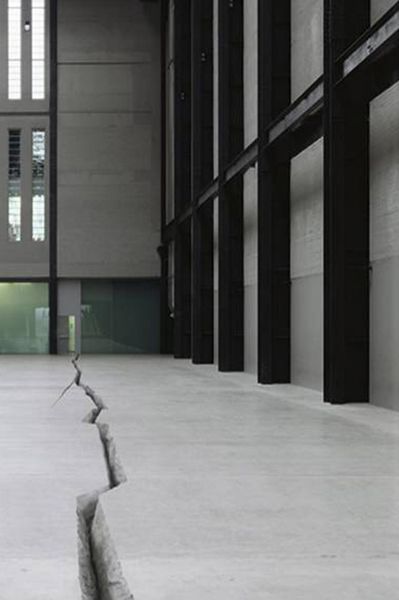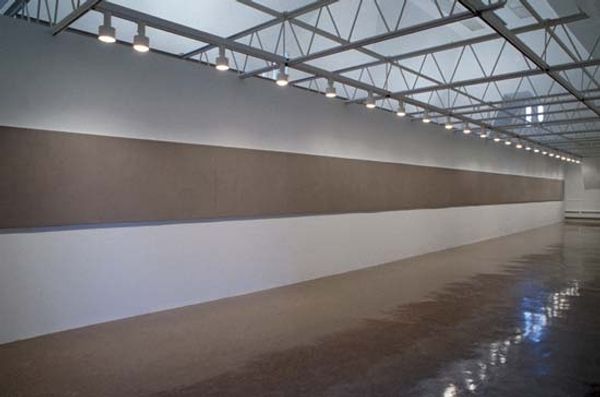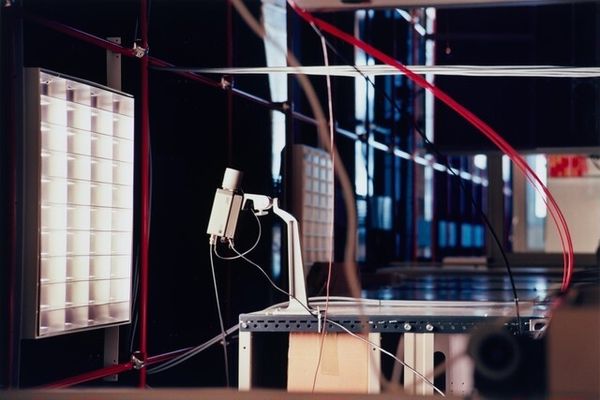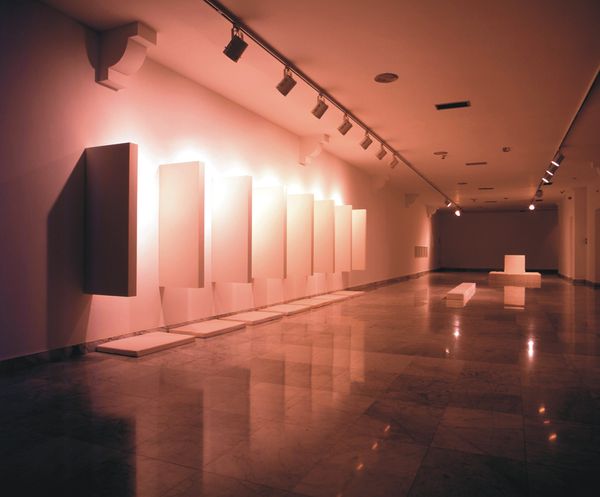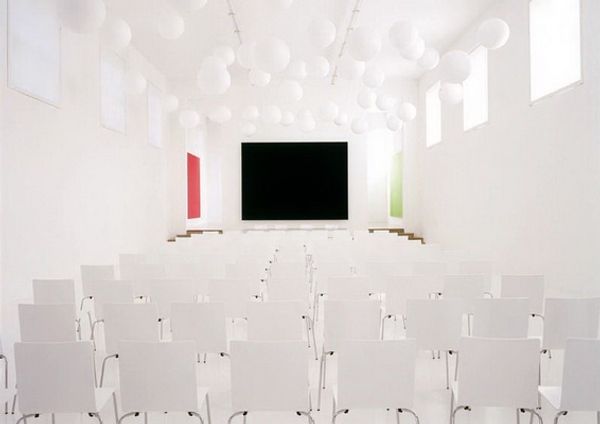
Dimensions: image: 1376 x 2630 mm
Copyright: © Courtesy Monika Sprueth Galerie, Koeln / VG Bild-Kunst, Bonn and DACS, London 2014 | CC-BY-NC-ND 4.0 DEED, Photo: Tate
Editor: This is Andreas Gursky’s *Centre Georges Pompidou*, part of the Tate collection. It’s a photograph, and I'm struck by the overwhelming sense of order and repetition. What do you see in this piece? Curator: The receding orthogonal lines formed by the tables and ceiling grid create a powerful illusion of depth, almost dizzying. Consider how the artist manipulates perspective to flatten and compress the space. It’s about volume and distribution. Editor: So it's more about the architectural space and less about the people within it? Curator: Precisely. The figures serve as visual anchors within the rigid structure. Their presence emphasizes the scale and emphasizes the impersonal quality of the scene. Editor: That's fascinating. I hadn't considered the figures as simply compositional elements. Curator: Studying its structure and material properties can be revealing. Editor: Thanks, I will remember that.
Comments
tate 7 months ago
⋮
http://www.tate.org.uk/art/artworks/gursky-centre-georges-pompidou-p11675
Join the conversation
Join millions of artists and users on Artera today and experience the ultimate creative platform.
tate 7 months ago
⋮
Centre Georges Pompidou was produced in a small size (114 x 699 mm) in an edition of sixty for Parkett, the Swiss art journal. The print owned by Tate, however, is one of two artist’s proofs of the work on a much larger scale. The photograph depicts the mezzanine exhibition hall at the Centre Pompidou in Paris during an exhibition of the work of architects Herzog & de Meuron in 1995. Herzog & de Meuron were the architects of Tate Modern. In 2000, the year the gallery opened to the public, they presented this print to the Collection.
